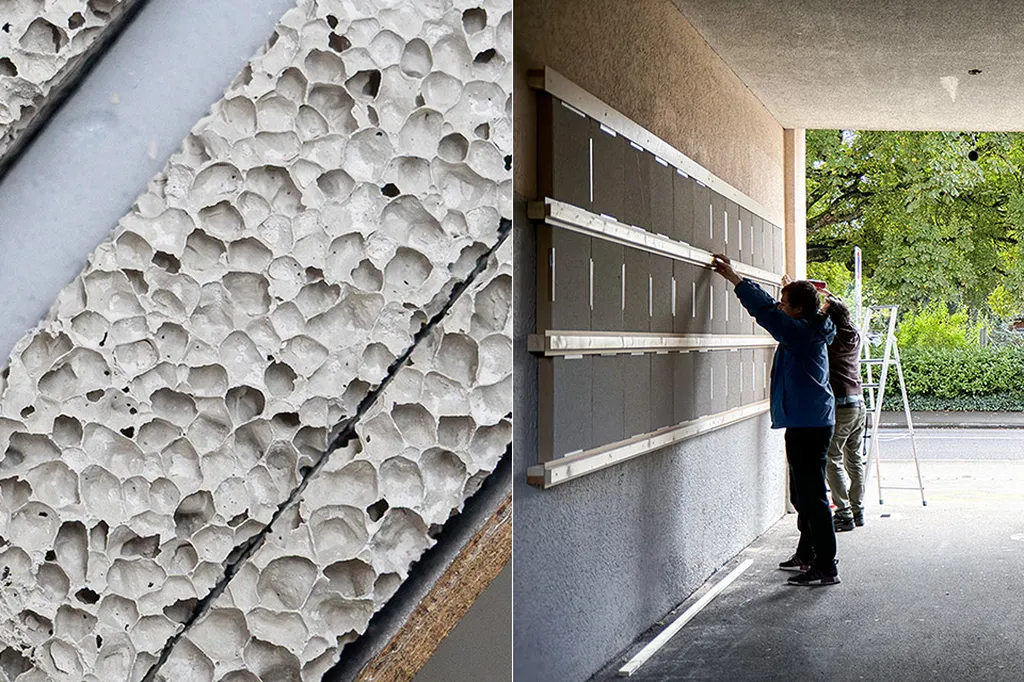In the heart of China’s Xinjiang region, researchers are pioneering a new approach to sustainable construction materials that could significantly impact the energy sector. Alipujiang Jierula, a scientist at the College of Civil Engineering and Architecture at Xinjiang University, has led a study that could revolutionize the way we think about building materials, particularly in the realm of foam concrete.
The study, published in the journal *Applied Sciences* (translated from its original title in Chinese), focuses on the optimization of steel slag–ceramsite foam concrete (SSCFC), a novel composite material designed to enhance the performance of eco-friendly construction materials. By integrating industrial by-product steel slag with lightweight ceramsite, the team aimed to create a material that not only reduces waste but also improves structural integrity.
“Our goal was to develop a material that balances performance and sustainability,” Jierula explained. “By optimizing the mix proportions, we can significantly enhance the compressive strength and fluidity of the concrete, making it more versatile for various construction applications.”
The research employed a three-factor, three-level orthogonal experimental design, investigating 12 mix proportions at a fixed density of 800 kg/m³. The variables included the water-to-cement (W/C) ratio, steel slag replacement ratio, and ceramsite replacement ratio. Through a synergistic approach combining range analysis and analysis of variance (ANOVA), the team quantified the significance of each factor on the material’s properties.
One of the key findings was the hierarchical importance of these factors. For fluidity, the steel slag replacement ratio was found to be the most significant, followed by the W/C ratio and then the ceramsite replacement ratio. Conversely, for compressive strength, the W/C ratio took precedence, with ceramsite replacement and steel slag replacement following in importance.
“Understanding these relationships is crucial for optimizing the material’s performance,” Jierula noted. “By fine-tuning these variables, we can achieve the desired properties for specific applications, whether it’s for insulation, load-bearing structures, or other construction needs.”
The study also established partial least squares regression (PLSR)-based prediction models, which demonstrated high reliability with R² values exceeding 65% for both fluidity and compressive strength predictions. This predictive capability is invaluable for commercial applications, allowing engineers to tailor the material’s properties to meet specific project requirements.
The implications for the energy sector are substantial. As the demand for sustainable and energy-efficient buildings grows, the need for innovative materials that reduce waste and improve performance becomes ever more critical. The optimized SSCFC developed by Jierula’s team could play a pivotal role in this transition, offering a cost-effective and environmentally friendly alternative to traditional construction materials.
“Our research not only advances the field of sustainable construction but also opens up new possibilities for the energy sector,” Jierula said. “By reducing the environmental impact of building materials, we can contribute to the broader goals of energy efficiency and sustainability.”
As the construction industry continues to evolve, the insights gained from this study could shape future developments in material science and engineering. By leveraging the power of orthogonal experimentation and multivariate analytics, researchers can continue to push the boundaries of what’s possible, creating materials that are not only high-performing but also environmentally responsible.
In the quest for sustainable construction, every innovation counts. Jierula’s work is a testament to the power of scientific inquiry and its potential to transform industries, paving the way for a greener, more efficient future.

